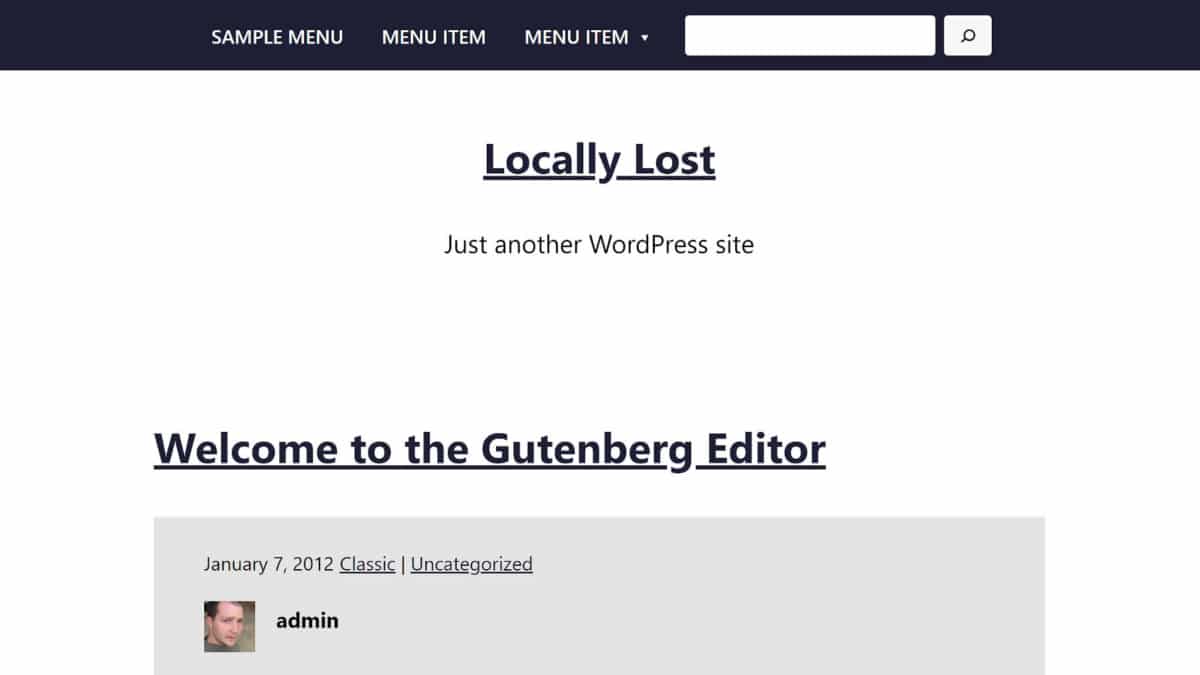As we inch closer to a year in which WordPress’s primary focus will be on Full Site Editing, it is fortunate timing that Themes Team representative Carolina Nymark publicly announced her latest theme, Armando. It is a blogging theme that makes use of the latest features from the Gutenberg plugin.
The theme is currently awaiting review for the WordPress theme directory. It is also available via GitHub.
The news of Armando came moments after Nymark announced a redesign of her Full Site Editing website. The site is a resource for WordPress users and developers to learn more about upcoming features. It is built entirely out of blocks. It is also one of the few sites in the wild running a block-based theme in production.
Armando is one of the better themes for testing Full Site Editing. This should come as no surprise. Nymark is a veteran of the Themes Team. She tends to cover all the bases and has done so with this theme. There are even notes in the code where she intends to change things as site editing improves.
The theme is a solid starting point for theme authors who have yet to dip their toes into block-based theme development. It is also usable enough for end-users who want to experience the current state of Full Site Editing.
 Editing a single post template in the site editor.
Editing a single post template in the site editor.
The theme does not have a particular artistic flair. It is simple. It is a basic blogging theme that showcases each element the Gutenberg team has covered thus far in its journey toward the new block-based design system.
Armando also uncovers some of the current problems with the system. As Nymark noted in her stylesheet, “Date and categories are all block elements, we need to adjust them to align them better next to each other.” On the front end, the theme’s CSS adjusts these block-level elements to correctly line up with each other. However, as seen in the site editor view, they are separated as blocks. Post metadata like the author, date, and category often need to be inline. This choice for aligning basic elements of theme design also needs to exist in the site editor. That is if we ever want theme authors to adopt it. And, we haven’t even gotten to the complicated stuff yet.
Armando is one of the first block-based themes I have seen to include a 404 template. This is important because it is one reason the site editor needs to exist in WordPress. Throughout all of the platform’s history, there was no standard way for users to edit their 404 page, which is the page visitors see when they travel to an invalid URL on a site.
 Editing the 404 template
Editing the 404 template
Landing on a 404 page on most WordPress sites is one of the worst user experiences a site visitor can have on the web. Traditionally, themes might have added some unhelpful text, a search box, and maybe a list of recent posts. But, most users had no control over it unless they directly edited their theme’s code. They could not add a bit of pizzazz, personalized messages, or more meaningful directions for the visitor who stumbled upon the page through no fault of their own. Some themes have provided workarounds for this over the years. Such solutions have included allowing users to assign a private page or adding customizer options. However, changing themes meant losing that 404-page customization because it was a non-standard solution.
Full Site Editing changes that. Users will have direct access to creating a custom 404 page that best suits their site. It is nice that the Armando theme already includes a template to start from.
The Armando theme also includes three different header templates for users to switch between. This could offer some insight into how theme authors may tackle design choices in the future. Traditional themes often have numerous checkboxes, input fields, and dropdowns for changing such design elements. Selectable template parts could be the alternative.
 Switching the header template part.
Switching the header template part.
I lean more toward seeing theme authors using block patterns rather than templates for this. However, WordPress needs to add a method for designating patterns on specific editing screens (e.g., post editor vs. site editor). In the long run, the patterns UI feels like it will be a better place. That is assuming it ever receives an expanded view or overlay option. There may be solutions where patterns and template parts merge as well.
Either way, this type of experimentation is what we need to see in the WordPress theme development world at the moment. I welcome more of it.
Like this:
Like Loading…





